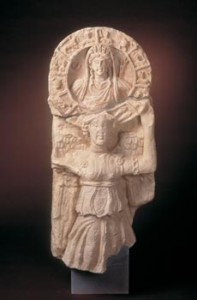
 Mermaids occur in legends from cultures around the world and vary in shape, origin, and intent. From the beautiful temptress on the cliffs luring boats onto dangerous shoals to peaceful coexisting aquatic humans, mermaids have made a place for themselves in history. The basics of merfolk is that they are neither human nor fish but some sort of mammal that includes elements of both. They are musically talented and astoundingly beautiful.
Mermaids occur in legends from cultures around the world and vary in shape, origin, and intent. From the beautiful temptress on the cliffs luring boats onto dangerous shoals to peaceful coexisting aquatic humans, mermaids have made a place for themselves in history. The basics of merfolk is that they are neither human nor fish but some sort of mammal that includes elements of both. They are musically talented and astoundingly beautiful.

The first documented mermaid was Atargatis, the Syrian goddess of fertility from around 1000 bc who was worshiped in the city of Ascalon. According to Herodotus, her temple there is the oldest for Roman goddess Aphrodite, for whom he gives Atargatis credit for inspiration. Atargatis was also known to the ancient Greeks as Derketo. According to the Greeks, Derketo was a nymph who fell in love with a human shepherd boy. In shame at the resultant pregancy, she killed the shepherd and tried to drown herself in the sea. Too beautiful for suicide, she was saved but changed into a mermaid. Her daughter survived to become the goddess Semiramis. The sea was seen as fertile and Atargatis served to connect the sea and the community. Some people therefore considered fish sacred and did not eat them.
 The Greeks had another mermaid in their repertoire – Thessalonike. She was the sister of Alexander the Great and accidentally drank or had her hair washed in immortal water intended to keep her brother safe in battle. Stricken with grief at his death, she threw herself into the sea but could not die. Athena decided to help her out and turned her into a mermaid. Sailors were asked when passing “Is Alexander the king still alive” and if they answered “He is and still reigns”, she calmed the seas for their travels. If not, she turned into a Gorgon and summoned a storm.
The Greeks had another mermaid in their repertoire – Thessalonike. She was the sister of Alexander the Great and accidentally drank or had her hair washed in immortal water intended to keep her brother safe in battle. Stricken with grief at his death, she threw herself into the sea but could not die. Athena decided to help her out and turned her into a mermaid. Sailors were asked when passing “Is Alexander the king still alive” and if they answered “He is and still reigns”, she calmed the seas for their travels. If not, she turned into a Gorgon and summoned a storm.
Some believe the Sirens of the Odyssey to be mermaids. Others describe them as half woman, half bird. Sirens and mermaids both are credited through Greek history and beyond as luring men to their deaths on rocky shoals.
The Arabian Nights series also includes a number of mermaids. Some lure men off their itinerary or even to their deaths. Others are depicted in mostly human form, just living underwater, even mingling and interbreeding with land humans.
Those are just the oldest legends and most well-recognized. But there have been sightings and stories around the world and more happen every day. Why is this one of the few legends that crosses so many cultures? It’s possible that the mermaid represents the intertwined lives of human culture and the ocean. Country borders have been decided on the basis of ocean access (check out the Democratic Republic of Congo), though most consider the impetus for this economic – for most of human history, ship travel was the most efficient means of trade.
In addition, there is a rare congenital birth defect called Sirenomelia in which the legs of the child are fused together. It’s about as common as coinjoined twins and the children generally don’t live more than a few months due to associated organ development issues. However, over the course of human history, it’s possible that one or two of these children survived long enough to work their way into legend.
~Bluegrass Blue Crab
I’ve heard the claim that manatees have been mistaken for mermaids, but I guess I’ve never been at sea long enough to think that one looks like a beautiful woman…
Can I throw this is without sounding lame? the Little Mermaid: Best Disney Movie Ever!
KZ tweeted this link a couple days ago. It’s a speculative anatomy of the mermaid skeletal and muscular structure (scroll down a bit). Neato.
This Little Mermaid?
Great Post thank you,
thought you might like my Mermaid Queen machinima film
with Lisa Thiel’s lovely song
http://www.youtube.com/watch?v=YBKZG6Fc7aE
Bright Blessings ~